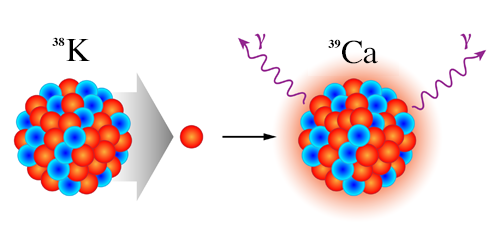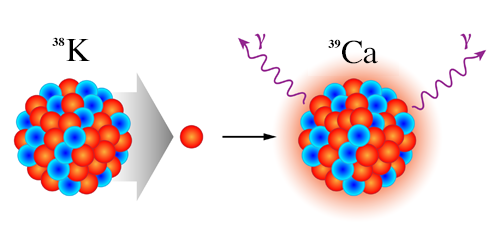Intel on Stellar Element Production from Accelerator Data
Classical novae—thermonuclear explosions occurring when a white dwarf accretes material from a companion star—are thought to be an important source of the elements up to calcium. However, there are large uncertainties in the existing model predictions of the amounts of the elements generated in novae. Such shortcomings are partly due to poor knowledge of the rates of the nuclear reactions through which such elements are created. Now Gregory Christian, at Texas A&M University in College Station, and colleagues have characterized one such reaction with unprecedented precision. According to the authors’ analysis, the new results dramatically reduce the uncertainties of model calculations.
The researchers focused on a reaction in which the nucleus potassium-38 captures a proton to form calcium-39 and releases gamma rays. Previous theoretical work indicated that for certain types of novae this reaction was a major determinant of the production rate for calcium, potassium, and argon. In the experiments carried out at TRIUMF, Canada’s national laboratory for particle and nuclear physics, the team directed a beam of radioactive potassium-38 onto a target of hydrogen gas. Using TRIUMF’s Detector of Recoils And Gammas Of Nuclear Reactions (DRAGON), they then counted the rate at which calcium-39 and the gamma rays were produced in coincidence. From such measurements, the team obtained an estimate of the reaction rate with an uncertainty—defined as the ratio of the upper to the lower limit for the rate—of about 15, which is 250 times better than previous estimates. They found that the new limits improve the accuracy of abundance predictions for the three elements by about a factor of 10.
This research is published in Physical Review C.
–Matteo Rini
Matteo Rini is the Deputy Editor of Physics.





